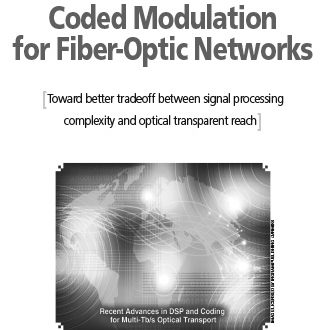To utilize the available resources in an optical network efficiently. the tradeoff between spectral efficiency. DSP hardware complexity. and transparent reach needs to be optimized for different links in the network. Joint coding and modulation schemes offer more freedom to exploit the available four dimensions in these channels than traditional independent FEC and modulation techniques. As discussed. a CM scheme can operate over a link with larger transparent reach than conventional schemes but with the same complexity (or even lower). for a wide range of spectral efficiencies. Among the CM schemes discussed for AWGN channels. specifically. MLCM. BICM. TCM. nonbinary. and polar nonbinary schemes. MLCM is not attractive for fiber-optic communications because of its large number of component codes. The main bottleneck of nonbinary schemes is the decoding complexity. making it an unrealistic solution for large constellations. A better tradeoff between DSP complexity and transparent reach of 4-D CM schemes makes them superior to 2-D schemes. Finally. a 4-D CM scheme provides more flexibility than 1-D and 2-D CM schemes. which facilitates its combination with signal shaping techniques as well as rate adaptation methods with no need for multiple component codes.

 Iran Energy News Oil, Gas, Petrochemical and Energy Field Specialized Channel
Iran Energy News Oil, Gas, Petrochemical and Energy Field Specialized Channel



